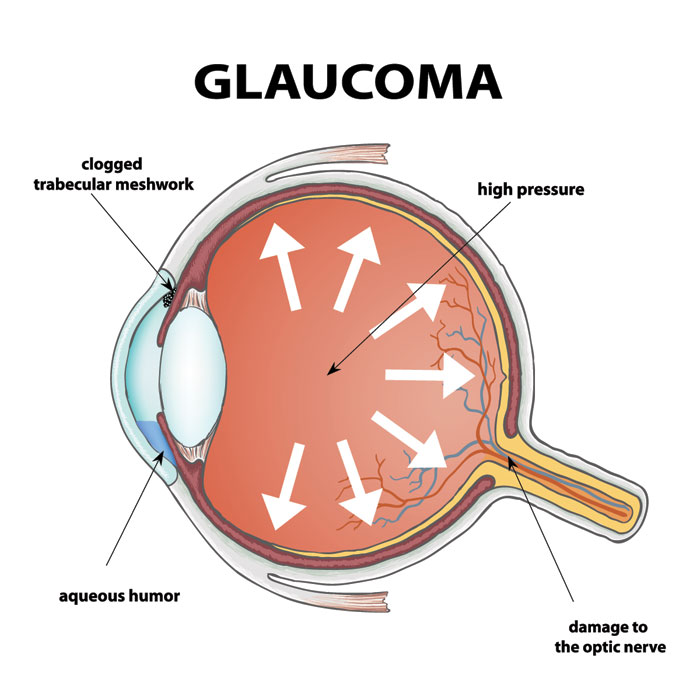Understanding Glaucoma: A Comprehensive Look at the 5 Types
Introduction
Glaucoma is a group of eye conditions that damage the optic nerve, which is essential for clear vision. This damage is often caused by abnormally high intraocular pressure and can lead to vision loss and blind spots if untreated. In this guide, we explore the five main types of glaucoma, their symptoms, risk factors, and treatment options.
Overview of the 5 Types of Glaucoma
The five major types of glaucoma each have unique characteristics:
- Open-angle Glaucoma
- Angle-closure Glaucoma
- Normal-tension Glaucoma
- Congenital Glaucoma
- Secondary Glaucoma
In-Depth Look at Each Type
1. Open-angle Glaucoma
Definition and Overview: Open-angle glaucoma (OAG) is the most common form, affecting about 90% of glaucoma patients. It occurs when the drainage canals of the eye become partially blocked, leading to fluid build-up and increased eye pressure.
Symptoms: OAG develops slowly, often with no noticeable symptoms until significant vision loss occurs. Early signs include gradual peripheral vision loss and, in advanced stages, tunnel vision.
Causes and Risk Factors: Aging, family history, African or Hispanic heritage, and a history of high eye pressure.
Diagnosis: Comprehensive eye exams that measure intraocular pressure, examine the drainage angle, and evaluate the optic nerve.
Treatments: Eye drops, laser procedures, or surgery to improve fluid drainage and reduce eye pressure.
2. Angle-closure Glaucoma
Definition and Overview: This occurs when the drainage canals are completely blocked, causing a sudden rise in eye pressure. It is a medical emergency that requires immediate treatment.
Symptoms: Severe eye pain, blurred vision, halos around lights, eye redness, nausea, and vomiting.
Causes and Risk Factors: Asian heritage, farsightedness, shallow anterior chamber.
Diagnosis: Measuring intraocular pressure and inspecting the drainage angle.
Treatments: Immediate eye drops, medications to reduce pressure, and laser procedures to create an opening in the iris for fluid drainage.
3. Normal-tension Glaucoma
Definition and Overview: In NTG, the optic nerve is damaged despite normal eye pressure. The exact cause is unknown.
Symptoms: Gradual peripheral vision loss and tunnel vision in advanced stages, often unnoticed early on.
Causes and Risk Factors: Family history, Japanese ancestry, low blood pressure, systemic heart disease.
Diagnosis: Focused examination of the optic nerve head.
Treatments: Eye drops or medications to lower eye pressure, sometimes laser therapy or surgery.
4. Congenital Glaucoma
Definition and Overview: A rare form affecting infants or young children due to abnormal eye development, leading to high intraocular pressure and optic nerve damage.
Symptoms: Excessive tearing, light sensitivity, enlarged or cloudy cornea, frequent blinking.
Causes and Risk Factors: Genetic factors or abnormal eye development during pregnancy.
Diagnosis: Thorough eye exam and medical history review.
Treatments: Surgery to correct the drainage angle and allow proper fluid flow.
5. Secondary Glaucoma
Definition and Overview: Results from another eye condition or disease, including eye injuries, cataracts, diabetes, or steroid use.
Symptoms: Vary based on the underlying cause but may include vision loss, eye pain, and redness.
Causes and Risk Factors: Eye conditions, injuries, medications, or systemic diseases.
Diagnosis: Comprehensive eye exam and evaluation of medical history.
Treatments: Depends on the cause; may include eye drops, medications, laser therapy, or surgery.
Prevention and Management Tips
Healthy habits and early detection can reduce the risk or slow glaucoma progression:
- Regular eye exams
- Exercise regularly
- Maintain a healthy diet
- Keep blood pressure under control
- Limit caffeine intake
- Wear protective eyewear during high-risk activities
Early detection and proactive management are essential for preserving vision and preventing long-term vision loss. Being informed and maintaining healthy eye habits can significantly improve eye health and overall well-being.




